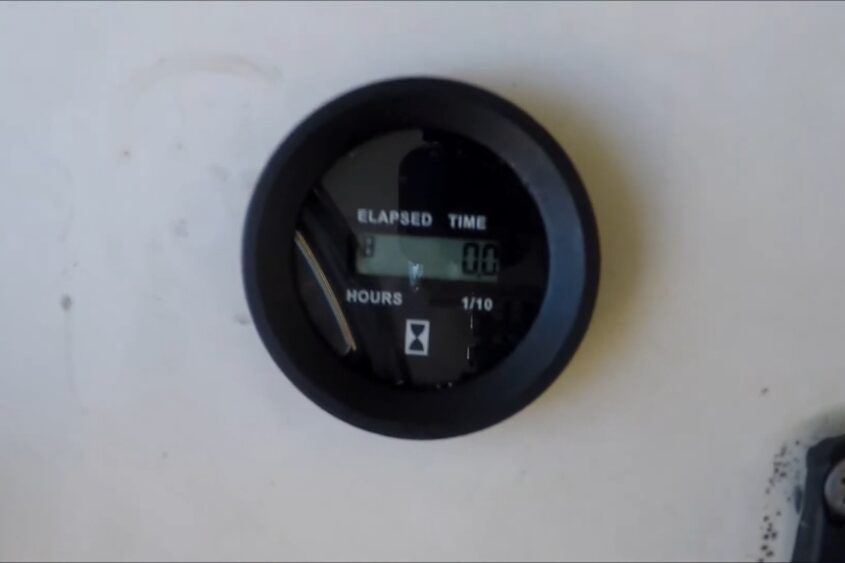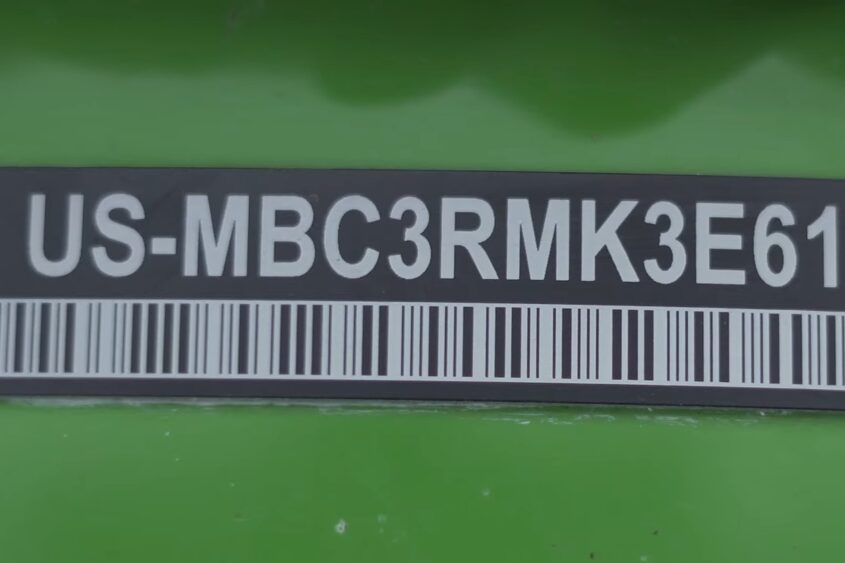If you’re unsure how to find out how many hours are on your motor, don’t worry! This article will review all the different ways of calculating those numbers. And if you’re looking for a good deal on a used motorboat engine, then knowing what to look for in terms of hours is important.
Most motors tend to fall within standard ranges of Boat Engine Hours between 500-1000 hours; yet, there are always exceptions. 750-1000 seems to be the most common range for boats with an average motor age between 7-10 years old.
What is the Boat Engine Hours?
The Boat Engine Hours, also known as the “total hours of engine use for a boat,” is the number of hours your engine has been used since it was installed on your boat.
This number can be important to know when trying to identify the condition and lifespan of your boat. In theory, this is the number of hours your engine has been running since it was new. But, you will need an electronic device to measure the Boat Engine Hours on most boats. Thankfully, there are many ways to do this these days, especially if you have a newer model boat with a digital hour meter.
How do you check engine hours?
To determine how many hours are on your engine, you’ll need to add up all the time that the engine has been in use. This includes running, idling, or just sitting in the water. This will be simple if you have an hour meter that records the total hours used.
But if your boat doesn’t have a digital hour meter or if it’s an older model without one, don’t worry! There are other ways to calculate those numbers.
One popular method is called “odometer correction.” With this approach, you take the number of miles the boat has traveled and divide it by either 5 or 10 (depending on whether your motor is a 2-stroke or 4-stroke). This will give you a rough estimate of how long the engine has been running.
While Boat Engine Hours are an essential factor to consider when purchasing a new or used motorboat engine, it’s not the only thing you should pay attention to. Things like the expected use and age of the engine are also essential considerations.
Checking Engine Hours with an Hour Meter
A boat’s engine hours are a fundamental indicator of the number of times it has been used. The more your engine is run, the higher the chance there will be for mechanical failure and other problems. The best way to keep track of engine hours is by using an hour meter, typically found in the dashboard or instrument panel on most boats.
On Yamaha, Mercury, Honda, Evinrude, or Suzuki outboard engines, you can find your engine hours in the console gauge room. Engine hours were tracked by the physical gauge on some of these manufacturers.
An hour meter will count how many hours the engine has been used and will usually have an indicator that shows when the engine is running. These indicators are often lights or a needle on a gauge. You can also find hour meters in cars, trucks, and other vehicles.
To check engine hours with an hour meter, follow these steps:
1. Find the hour meter in your boat’s dashboard or instrument panel. The location of the hour meter varies by manufacturer and model, but it is usually found near the steering wheel or throttle.
2. Look at the gauge or indicator on the hour meter. The needle should point to a number that represents the engine hours. If you find no numbers, look for a zero marker.
3. Write down the hours on a piece of paper, or use your phone to take a picture.

Checking Engine Hours Using the Boat’s Serial Number
There are other ways to determine how long the engine has been running if you don’t have access to an hour meter or if your boat doesn’t have one already. The easiest way to do this is by using the engine’s serial number.
The serial numbers of most engines will be found somewhere on a metal plate outside the machine. This is usually in plain sight, but it can sometimes be found under a plastic covering or behind a sticker.
The numbers will be stamped into the metal and appear in various formats. Most engines have their serial number etched onto the engine block. But some are found outside the transmission or on the engine’s flywheel.
After locating the serial number, write it down and look it up on a boat serial number checkup website.
There are several websites where you can type in your serial number and get hours on the engine. Make sure you know which site to go to for your particular boat.

FAQs
What information do you need when checking your boat engine hours?
When checking boat engine hours, you need to verify the following:
The boat engine hours must match what is stated on the rental agreement.
Boat engine hours are not always accurate. It is essential to verify that the boat engine hours match what is stated on the rental agreement.
A certified mechanic should do a boat engine hours inspection.
The best way to check the engine hours on a boat is to bring the rental agreement to your local marina or marine dealer.
The local marina or marine dealer should be able to tell you if the engine hours are correct.
A boat engine hours inspection is an integral part of any boat rental agreement, especially when renting a boat from an online company.
So, checking boat engine hours can be tricky business! But don’t worry – we’ve got all the information you need right here on our website.
What are the benefits of knowing your boat’s engine hours?
There are many benefits to knowing your boat’s engine hours. Perhaps the most crucial advantage is that it can help you plan for the future.
Knowing how many hours are remaining on your present engine gives you time to save money and shop around for the best price before it wears out.
Also, checking your boat’s engine hours regularly helps ensure everything is running smoothly.
Minor problems can be caught and fixed before they turn into big ones, saving you time and money in the long run. By seeing these issues early, you’re also doing your part to help preserve the life of your boat engine.
Finally, keeping track of your boat’s engine hours can give you peace of mind while out on the water. You’ll know exactly how much longer you have until your next service appointment.
Also, you will be able to prepare yourself better financially and logistically. This readily available information makes taking care of your boat more accessible.
How can you track your boat’s engine hours over time?
If you’re a boat owner, keeping track of your engine hours over time is essential. This will help you keep your boat in top shape and give you peace of mind that everything is running as it should.
There are a few different methods you can use to track your engine hours. Such as using a marine engine hour meter, or you can use one of the many online services that provide this information.
Doing it yourself is going to be your cheapest option. But, if you don’t have the time or are not interested in doing it yourself, plenty of online services can help you.
What is the best way to ensure the engine in my boat is in excellent condition?
It’s essential to know the hours of use for your boat engine. You should be able to get a reference of hours from the previous owner, and if you’re not sure, it’s always best to take it to a marine mechanic.
Before considering engine hours as accurate, ensure the meter was never disconnected. Also, check for any damage around the engine.
Inspect the hull for any gouges or cracks, and check the engine, steering system, fuel system, electrical system, and bilge for damage. Finally, take a test spin to see if everything is working correctly before buying your boat!
How often should you check your boat’s engine hours?
You should check your engine hours quite often. If you are a boat owner, it is a must to check your engine’s hours to determine when it needs to be serviced and maintained.
This will help you avoid unexpected breakdowns while out on the water. Also, if you are a potential buyer, knowing the engine hours can help you decide whether to buy a boat.
How many boat engine hours is a lot?
The most common cause of engine failure is hours. The longevity of an engine is directly related to the number of hours it has been used, and all engines have a certain life expectancy or valuable life.
Most boat engines have a life expectancy of about 1,500 hours, but some are more and others less.
A small four-stroke engine typically lasts 250 to 300 hours before it needs a major overhaul. At the same time, a large diesel engine can last 1,000 hours or more.
The engine’s number of hours is usually stamped on the base of the cylinder head (see photo). This number is in hours, not miles.
If the engine has been run for thousands of hours and it’s time to overhaul it, then you can expect that You will need an entirely new engine.
If an engine has been run for less than 200 hours, then it should be able to last another 100-200 hours before needing a major overhaul.
What is considered high hours on an outboard motor?
About outboard motors, boaters need to be aware of what is considered high hours. After all, you don’t want to buy a boat that will need too much maintenance right off the bat! The average outboard motor will last about 1500 hours before needing too much attention.
But, if a boat has many hours on it–say 2500 or more–it is considered high hours and should be reviewed before buying. Remember that maintained diesel engines can give boaters 5000 or more hours of dependable service!
Just because a boat has low hours doesn’t mean it’s guaranteed to run well over the long term. Some ships with very few hours can give you trouble when they are first bought.
But don’t worry, there are plenty of good options for you! The top three manufacturers are usually Suzuki, Yamaha, and Evinrude. All three have four-stroke outboard engines but vary in their focus on the two-stroke engine technology.

